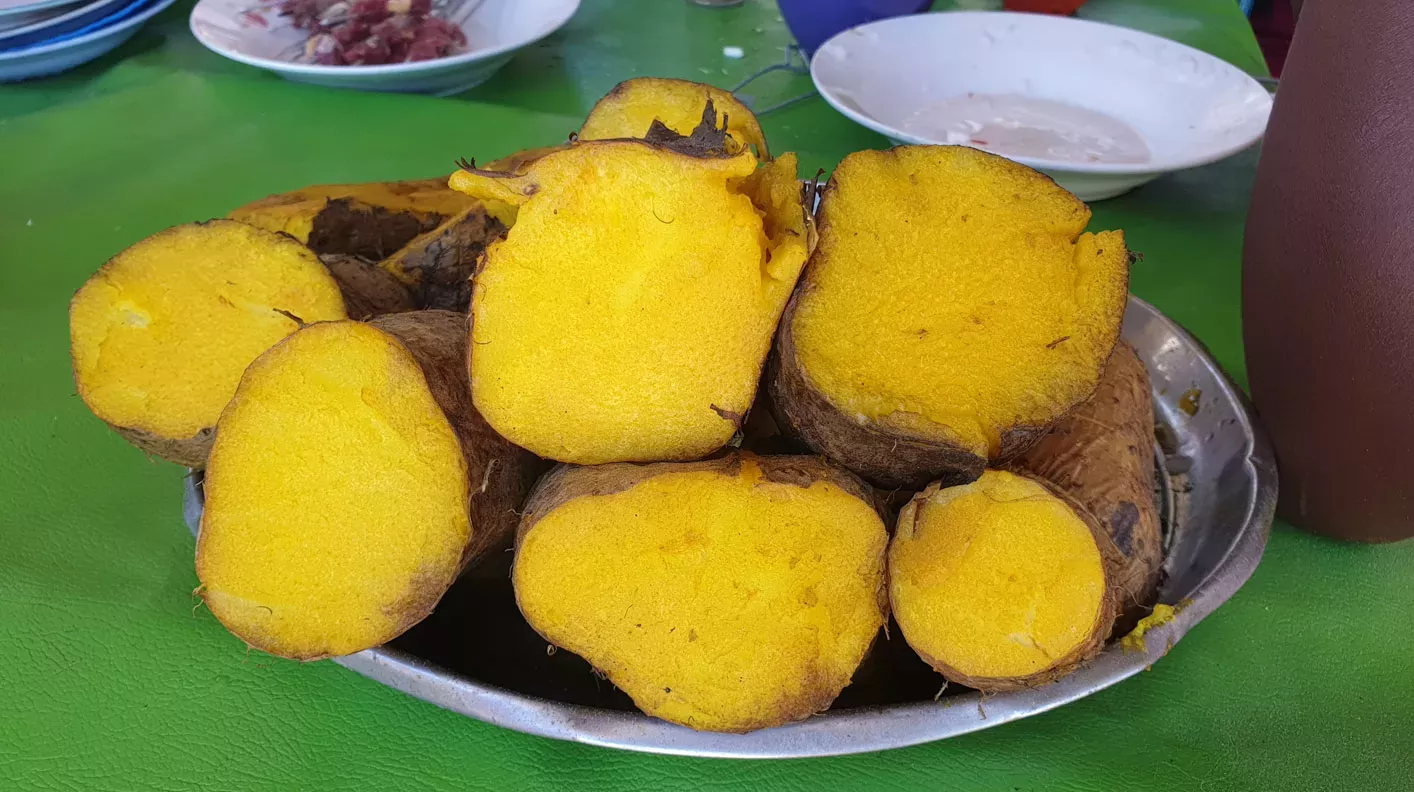5 May 2021
Saving wild yams
A story of diversity, COVID-19, food and politics

For as long as anyone can remember in rural Madagascar, wild forest yams have been seen as an infinite natural resource, open to exploitation to meet the desires and needs of communities.
Yams are an important food in Madagascar and, while there are cultivated varieties, many rural communities opt for wild ones.
Sofia and Diana Regions in the northern tip of Madagascar are the richest area of the island for wild yam species diversity.
Five species, found nowhere else, grow there, two of them sold at seasonal town and city markets, fetching a high price for a starch staple.
The other three species are eaten by local communities.
However, all five are now threatened by extinction due to overexploitation and habitat loss.

Since 2015, Kew’s Madagascar team at the Kew Madagascar Conservation Centre (KMCC) have been working to conserve wild yams in the Sofia and Diana Regions.
We’ve developed community cultivation alongside increased growing and marketing of the cultivated winged yam, not native to Madagascar, to improve livelihoods and food security.
While unsustainable exploitation decreased, wild yams are still threatened, especially the local specialities Dioscorea orangeana (Ovy jia), D. sambiranensis (Angona), D. buckleyana (Taravy), D. irodensis (Bemandry, Ovy lagilasy) and a further species that we are currently describing (Ovy valiha).
Yam conservation in COVID-19 era
In 2020 the whole of Madagascar was put into lockdown due to the COVID-19 pandemic from March to July.
As a result, food supply chains were disrupted, which meant people in Diana region became increasingly dependent on their locally available natural resources.
Harvests there are unfortunately unreliable due to the seasonal climate, which is being impacted by climate change.
The local authorities, including Mayors of rural communes, gave people permission to collect unlimited amounts of forest resources, including the threatened local species Ovy jia.
They did so not just to help the local population suffering from famine and the lack of availability of food, but also to enhance their political popularity.
Consequently, the manager of the protected area (Forȇt d’Orangea), where Ovy jia is most abundant, was faced with uncontrolled collection.
The species has just three populations, all of which were heavily taken advantage of.
It looked like the writing was on the wall for a key regional food and income source.


Authorised yam collectors
However, at the same time as this was happening, we began a new project to conserve Diana’s yams.
Lead by Feno Rakotoarison, it sought to register households in six Diana communities as authorised yam collectors and implement a management plan.
We aim to both control and monitor yam collection and to gather data to improve resource management.
While it was not part of the pre-pandemic strategy for the project, we have taken the lead in working to push back against uncontrolled yam use caused by COVID-19 fallout.
Since November 2020 we have been engaging with communities, protected area managers and local and regional authorities to develop yam protection and get the necessary buy-in through stakeholder consultations, meetings and workshops.
Feno’s dedication and influence came to the fore in efforts to persuade local authorities to commit to the conservation of this invaluable resource.

Protecting the forest yams
Last month, these efforts bore fruit with the first official document of the yam management plan being validated and signed by all the appropriate stakeholders including local Mayors.
It contains key information on yams, the action plan and guidelines on how to implement it, including the use of household collector badges.
Every time a household collects forest yams, key information (name, badge number, national identity number, place of collection, quantity collected) is registered with the manager beforehand and checked afterwards.
Every month, project staff and the Regional Directorate for the Environment and Sustainable Development (DREDD)-Diana Region, with the support of the local and regional authorities, carry out a follow-up.
They help communities to use the plan and enforce it if unregistered collecting is discovered.


The management plan is a highly effective conservation intervention and the data it generates will enable the sustainable management of yam populations.
Most importantly, it is culturally appropriate and effective, forming a new community rule or "Dina".
This is where a participatory community-lead approach to developing natural resource management, when ratified by a court, becomes binding.
We believe that we have taken a vital step towards changing attitudes in communities and local politicians about natural resource use, instituting sustainable management and securing Ovy jia and the other unique yams of northern Madagascar for use by future generations there.
The approach is scalable and could grow from directly helping a few thousand people as we are doing here to millions across Madagascar if widely adopted.





